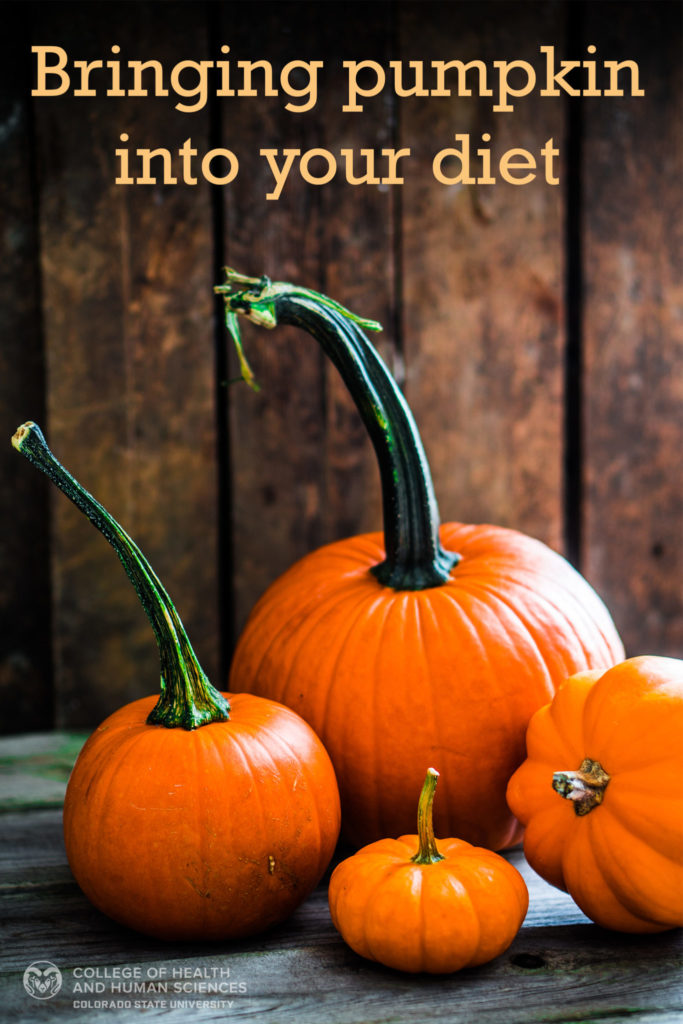Kale, spinach and other dark greens have been popular vegetables for several years; they are abundant at farm stands and grocery stores, and every nutrition website touts their health benefits. While certainly true, some people have grown tired of hearing about — and eating — these greens, and seek an alternative. Look no further than your local pumpkin (and squash) patch!
Like leafy greens, pumpkin is low in calories and high in fiber. It is a great source of vitamin A, potassium and antioxidants as well as a good source of magnesium and vitamin C. Related to the pumpkin and similarly delicious, butternut squash is sometimes called butternut pumpkin. Its orange flesh is even higher than either pumpkin or leafy greens in fiber, vitamin A, potassium and magnesium. What do these nutrients mean to you? They mean improved eye health and vision, heart health and blood pressure, cancer protection, immune system function, exercise recovery and even fertility.
pumpkin and similarly delicious, butternut squash is sometimes called butternut pumpkin. Its orange flesh is even higher than either pumpkin or leafy greens in fiber, vitamin A, potassium and magnesium. What do these nutrients mean to you? They mean improved eye health and vision, heart health and blood pressure, cancer protection, immune system function, exercise recovery and even fertility.
There are many ways to eat pumpkin beyond pie, and it is easy to get caught up in the explosion of pumpkin-flavored foods, such as pumpkin lattes, cookies, muffins, breads, ice cream and even chips. Be careful to not get fooled into buying foods processed with excess fats, sugars and sodium. The best pumpkin products are those that incorporate it into healthful combinations; pumpkin yogurt, mole, salsa, ravioli, whole-grain crackers and whole-grain cereal are a few good products on the market. If you like pumpkin-spiced drinks, try pumpkin tea or a pumpkin latte without whipped cream and sugar.
Pie pumpkins
Another great way to enjoy pumpkin is to cook and bake your own dishes. Butternut squash can usually be used interchangeably in recipes that call for pumpkin, giving you lots of options. At the store or market, choose fresh “pie pumpkins,” which are typically small and have sweet flesh. Pumpkins used for jack-o-lanterns are usually not eaten since the flesh is bland and stringy, although their seeds are great for roasting and contain lots of fiber and flavor. To enjoy butternut squash as an alternative, choose one that has an even cream or beige color and is firm and heavy for its size. If you are like me and want a shortcut for weeknights, get ready-to-use products: That means plain canned pumpkin (not pumpkin pie filling) or frozen plain butternut squash. Both taste great in a variety of healthful recipes. Here are my favorite ways to use them:
- muffins and bread, using whole-wheat pastry flour
- chili with black beans and tomatoes
- ravioli with homemade tomato sauce
- mousse with nonfat Greek yogurt
- baked into macaroni and cheese
- mixed into a vegetable soup
You can find a variety of healthful recipes online at eatingwell.com, cookinglight.com or nutritioncenter.colostate.edu. More great info is also available at the College of Health and Human Sciences Pinterest board. Enjoy these orange gems, along with a variety of other colors.
Melissa Wdowik, PhD, RDN, FAND, is an assistant professor at Colorado State University in the Department of Food Science and Human Nutrition, and director of the Kendall Reagan Nutrition Center.